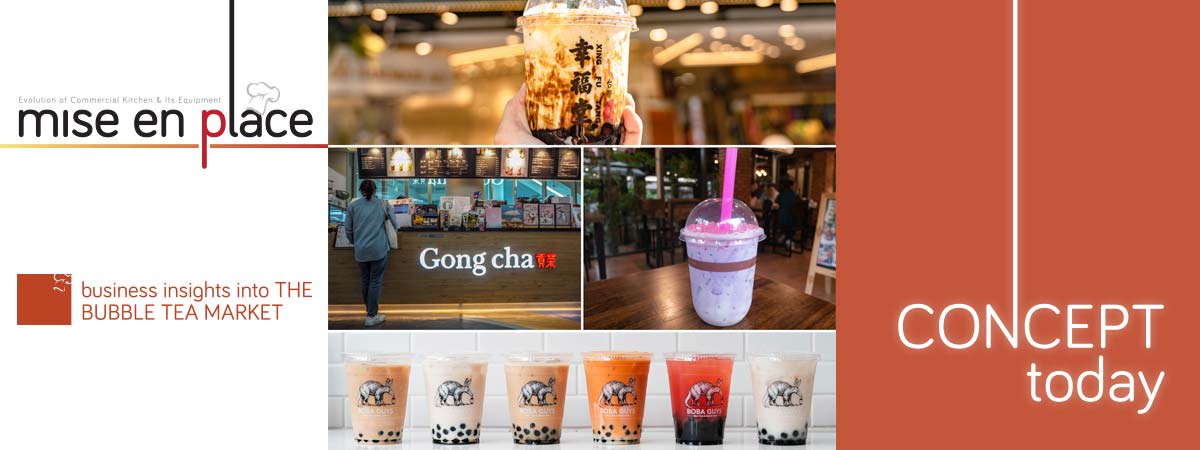 While it’s good to know about the availability of bubble teas, here are some important questions that a business owner in the F&B or hospitality industry in Asia can learn from:
While it’s good to know about the availability of bubble teas, here are some important questions that a business owner in the F&B or hospitality industry in Asia can learn from:
- What are the strategies bubble tea outlets use in maintaining their success rate, bottom line, and popularity?
- What is it about bubble tea drinks that keep everyone coming back for more?
- How do bubble tea shops cater to thousands of customers daily?
- What makes the bubble tea business a remarkable business model in a highly volatile business environment?
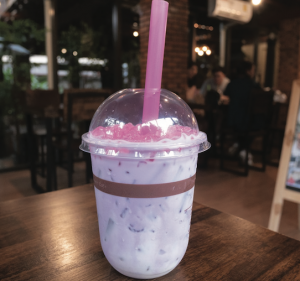 WHAT DRIVES THE BUBBLE TEA MARKET?
WHAT DRIVES THE BUBBLE TEA MARKET?
Expected to grow at a significant CAGR, the global bubble tea industry is originally associated to various health benefits found in tea such as its property as an antioxidant. The green tea and black tea which show the largest consumption and dominating market share when compared to the other types are known for anti-inflammatory and weight loss properties.
Yet the benefits are often negated as people prefer drinking the usual sugar-loaded and calorie-heavy version of bubble tea. Although some choose to not overdo the beverage given its nature, the sweet and original nature of this tea have brought it to more than 30 countries and it only goes on. That brings us to the question – what drives this demand exactly?
The availability of various types and flavours of bubble tea provides more options to consumers.
 There is a variety of types and flavours of bubble tea in the market, including but not limited to green jasmine bubble tea, black tea, fruit-flavoured bubble tea, and tea with milk. The fruit-flavoured bubble tea has been diversified into fruit-flavoured cream drink and sweetened fruit drink. The lactose-intolerant population, on the other hand, optionally consumes black bubble tea, green bubble tea, and green jasmine bubble tea amongst other drinks. It is the very fact consumers get to choose from a wide-ranging availability of bubble tea as a marketing strategy that helps capture more consumers, consistently, into the bubble tea market. In fact, many of the outlets are constantly launching new flavours and formulations to keep the excitement of their customers going.
There is a variety of types and flavours of bubble tea in the market, including but not limited to green jasmine bubble tea, black tea, fruit-flavoured bubble tea, and tea with milk. The fruit-flavoured bubble tea has been diversified into fruit-flavoured cream drink and sweetened fruit drink. The lactose-intolerant population, on the other hand, optionally consumes black bubble tea, green bubble tea, and green jasmine bubble tea amongst other drinks. It is the very fact consumers get to choose from a wide-ranging availability of bubble tea as a marketing strategy that helps capture more consumers, consistently, into the bubble tea market. In fact, many of the outlets are constantly launching new flavours and formulations to keep the excitement of their customers going.
Consumer shift towards healthy alternatives that substitutes sugar is expected to boost the growth of the bubble tea market.
Diseases such as obesity and diabetes that are often associated with the consumption of sugar have driven consumers to shift from sugar to sugar alternatives such as agave, stevia, and honey. These natural sweeteners are increasingly added to bubble tea drinks to substitute sugar, a major shift in the variation of bubble tea drinks in itself. For health-conscious people and the diabetic population, this is good news. This is also backed by the shift towards natural and organic food products which is one of the major factors that help in the growth of this segment.
The popularity of cafe culture
A big deal of bubble tea’s popularity comes from the growing popularity of café culture in Asia, especially due to the rapid expansion of Starbucks in Asia. After some time of “cooling down”, the bubble tea trend resurged following the opening of brands such as Chatime, Koi, and Tiger Sugar amongst others in cities across Asia that offers the bubble tea version of a café culture. These brands began introducing high-quality teas using real milk (typically a café “prerequisite”), surrounded by a casual and comfortable ambience. Now, you see these stores opening up in every street corner and malls, assimilating themselves into the daily lives of people just as much coffee does.
But remember, the popularity of bubble tea is ever-growing. Queuing up to 30 minutes for a bubble tea drink seems menial for true bubble tea lovers who are ready to do anything for their favourite drink. In Taiwan, it only gets more up-close and real personal – April 30 has become the official National Bubble Tea day. In line with the celebration, Gong Cha teamed up with Deliveroo in 2019 to hold Singapore’s biggest bubble tea giveaway, a cup standing at over 3.5m tall.
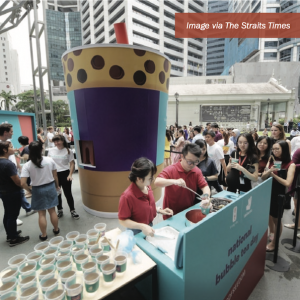
ANALYSING THE DEMAND
Because Asia Pacific is a large tea consuming population, the region is expected to hold the largest share of bubble tea market globally. In fact, this highly sensational drink from Taiwan has spread around the world from Asia to even the United States, Australia, Europe and South Africa. Followed by Asia Pacific, North America is predicted to hold the second-largest market share for bubble tea drinks.
What are the leading bubble tea market brands?
As the demand of bubble tea drinks continue to rise from consumers, manufacturers are beginning to pay more attention to improving on the functionality of bubble tea ingredients. Chatime, Gong Cha, Lollicup USA Inc, CuppoTee Company, and Bubble Tea House Company, are some among the brands that have invested in research and development activities so new variants of tea can be offered for an ever-growing market. Other players that contribute to the bubble tea market growth include Fokus Inc, Boba Box Limited, Troika JC, Sumos Sdn Bhd, Boba Tea Company and many more.
What are the strategies these brands use?
Expansion of franchise stores, investments, fundings, and new product launches are the key strategies of the bubble tea market players. Because of the popularity and groundbreaking response from the customers, the businesses in this market typically franchise into different locations. Gong Cha, for instance, was founded in 2006 in Taiwan. Now, the brand operates in 17 countries with more than 1,000 franchised stores, thanks to its pursuit of rapid expansion strategy. Similarly, Chatime Malaysia Sdn Bhd has recently revealed its five-year expansion plan as the brand plans to explore markets abroad such as the U.S., Singapore, Saudi Arabia, and India.
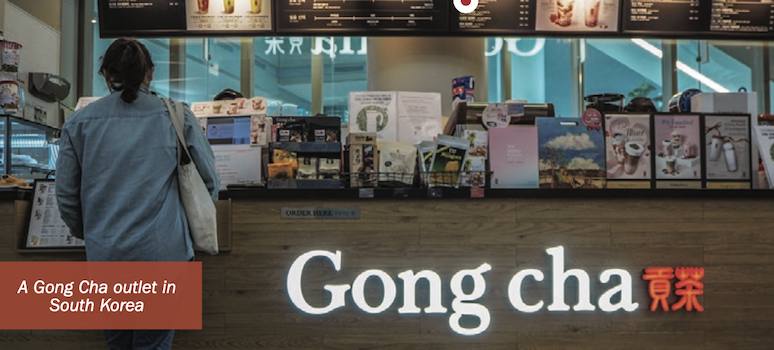
What are some of the key industry developments in the bubble tea market?
Year 2019 was a dynamic year for the bubble market.
- August 2019 – Gong Cha Group secured an undisclosed strategic growth investment from TA Associates, a private equity firm.
- June 2019 – Secret Recipe joined the bubble tea bandwagon. A series of bubble tea flavours such as boba brown sugar with milk, boba caramel milk tea, boba milk tea, boba brown sugar milk tea, boba kopi-C, boba midnight blue, boba signature fruit tea, and boba cham were released.
- August 2017 – Chatime was launched in Mumbai, India by Alchemist Foods Ltd from Taiwan. The store catered to provide freshly brewed bubble tea while penetrating the local beverages market.
World’s First Healthy Bubble Tea?
In response to the growing demand of bubble tea drinks, food ingredient specialist Holista CollTech Ltd (Holista) in joint-collaboration with home-grown fruit juice manufacturer SunFresh Fruit Hub Sdn Bhd (Fruit Hub) are the first in the world to produce healthy ingredients for the global bubble tea industry. Suited for the health-conscious and those at the risk of diabetes, the healthy versions of the three bubble tea ingredients are the pearls sugar syrup and sugar caramel, without altering the taste and texture.
What makes these ingredients different is the fact that they will have low-glycemic index (GI), which measures a food’s impact on blood sugar levels. In fact, all three products were tested by the Sydney University GI Research Service (SUGiRS) before hitting local and international markets by the first quarter of 2020. Similarly, the low-GI versions of flour-based noodles and flatbreads coproduced by Holista have already been validated by SUGiRS with scores that are comparatively lower than the products currently available.
Dr Rajen Manicka, founder and CEO of Holista said, “The Bubble Tea fad is not going to go away. The challenge is to offer a healthier version which can significantly reduce the potential of higher incidence of diabetes and obesity. We are combining science with the market reach and understanding of the needs of Bubble Tea manufacturers and vendors to offer a healthier alternative without increasing cost of production”.
SECRETS BEHIND THE BOBA OBSESSION
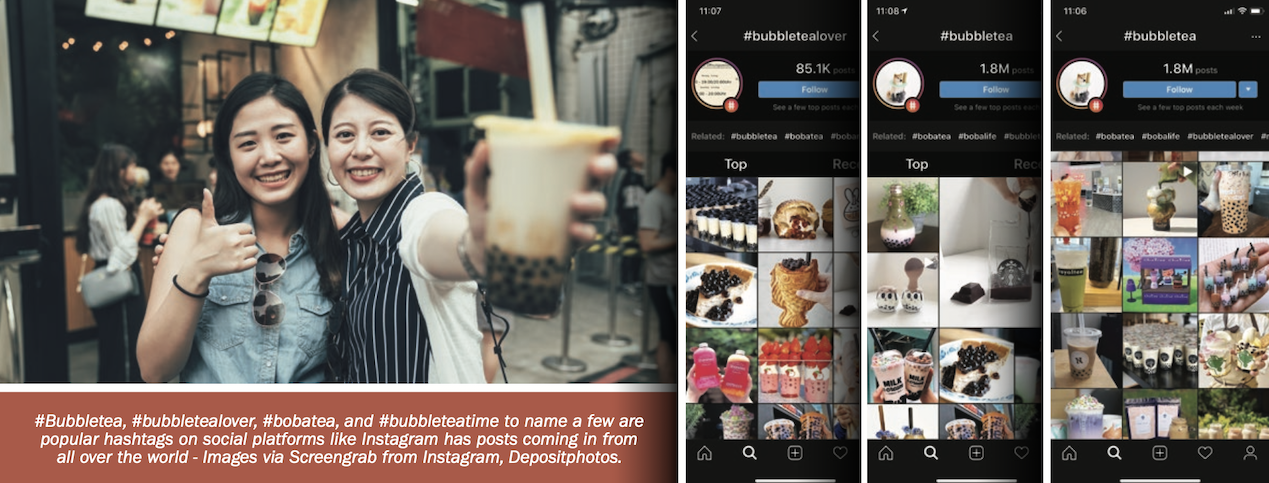 Boba feed
Boba feed
With the perpetual hunger for content, bubble milk tea has been successfully riding on the rising wave of social media influencers and online lifestyle publications. Bloggers and influencers in particular, have been playing a major role in reigniting consumers interest towards the milk tea trend. The speed of information about bubble tea drinks, promotions, and brands influences the sales of bubble tea brands and how long their queues are.
Of course, it’s also about the feed itself. Considering the “camera eats first” culture, the labour for the perfect #foodstagram and the constant feed of the most trending news such as bubble tea creations, it is no surprise that a big part of the bubble tea market is kept aflame by online publications and lifestyle bloggers. Feng Cha, a bubble tea brand from China, believes so, and thinks “pretty is power”. It appears mainstream consumers are seeking eye-catching visual presentation in an aesthetics-driven era.
While the importance of colour remains, texture is taking over the next facet documentation-worthy experiences. More brands are looking out for formulations that can be leveraged for an interactive experience, especially since bubble tea is the type of beverage that can be developed into various combinations of textures and appeals. Consider the standard black tapioca, the default is passing by and substitutes such as dragon fruit pearls, pea flower blue pearls, rainbow-coloured pearls, chrysanthemum pearls and pearls that look like Pokemon balls are already making their way in.
Made For Sharing
Compared to the earlier decades, food and drinks nowadays are designed to be documented. Flavour remains the focus of innovation, but aesthetic appeal such as colour and texture are becoming more important to penetrate into the minds of consumers and make a cut in the dizzying array of choices that they often have to navigate. As the share-focused societies engage more of the senses, some ingredients are seen as more prevalent compared to the usual. Matcha, turmeric, and activated charcoal, for instance, attracts attention thanks to its hues. When these ingredients are used in snacks, drinks and other types of food, the items have the potential to become an image-centric media for social media.
For Feng Cha, its swirling, vibrant drinks certainly made a difference in getting “Likes”. At the same time, consumers like to portray their individuality, a behavioural trend that is known as “buying lifestyle”. The way they do this is by sharing on the social media what they are drinking and where they are drinking it. With Instagrammable drinks and Instagrammable interior, bubble tea outlets certainly fit their rules.
Chatime, on the same note, is positioning itself to become a lifestyle brand. It’s no longer just about the fun, creativity and association with customer’s lifestyle has been the way to go for Chatime, and it’s more than just selling a good product at the counter. To keep up with the food and drinks posts on social media, Chatime has recreated its packaging, making it more Instagrammable and fun to drink.
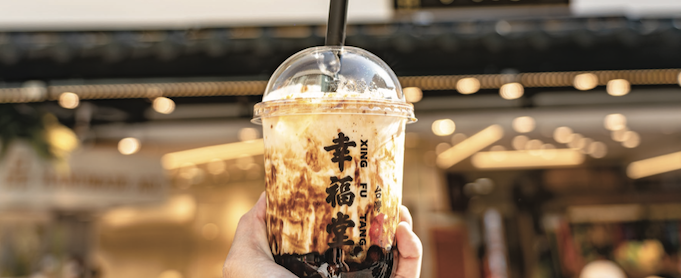
Social Media, Itself
One out of five consumers from China or India are influenced to purchase food and beverages by social media, according to a consumer study. In Malaysia and Indonesia, 58 percent of consumers are influenced by social media in their purchases. For brands owners, social media is largely instrumental in reaching customers of different demographics and knowing how to expand accordingly.
According to Collab Working Lifestyle, which is the Xing Fu Tang master franchisor in Peninsular Malaysia, the fact the Taiwanese bubble tea chain is branded “pretty Chinese” doesn’t stop the non- Chinese from making up 60 percent of its now-customer base. Its temple-like exterior, Mandarin signage, and the oriental-design chest from which customers can draw “fortune sticks” doesn’t stop the brand from attracting the non-Chinese who are within the right demographics.
At the same time, it’s wise considering that social media can also be an equally treacherous ground to depend on when establishing a brand. The spread of online news (true or false), reviews, and criticisms can be rapid and go out of control. Therefore, it is important to make every post is crafted reasonably and the messages are always relative to the brand.
The other trap is relative obscurity.
Do you remember “dirty bun”, churros, salted egg, and frozen yoghurt? Many of these viral food trends died after a brief period of time simply because attention span on social media feeds is a precious commodity. Therefore, to make a food fad stays covetable and social media worthy, constant innovation is needed. For bubble tea brands, standing out in the sea of milk tea brands is certainly a challenge they need to overcome – they need to know that no idea is too peculiar to try.
Automated Bubble Tea Machine?
The making of bubble tea has always been a simple process, pouring the flavoured powder using a hand, pouring cold water, and adding the bubbles. Mixing together these three ingredients is now in consideration of automation. The idea of designing and fabricating a bubble tea machine through automation is entirely a replacement for the traditional method that uses different equipment for different parts in the process of making a bubble tea.
However, there are some rising issues such as hygiene and quality. There’s the aspect of hygiene between traditional method and new method, and consistency in the quality of bubble by a traditional method and new method.
At the same time, some research has found that the traditional way of making bubble tea is less hygienic and consistent. With processes such as the Programmable Logical Control (PLC), the process of making bubble tea is likely to be automated for the better. PLC is a customised system used in industrial automation that serves as a flexible and robust control solution, adaptable to almost any application. No matter who who the first inventor of this machine is, an automated bubble tea machine will definitely bring a big surprise to the market.
 When Bubble Tea Goes To the West
When Bubble Tea Goes To the West
The bubble tea culture gained its popularity in mainstream North America only in 2014. The sudden eruption stirred fierce competition in the beverages market, boosting the range of flavours that are offered and the quality of bubble tea. Flavours such as taro milk tea, jasmine milk tea, mango green tea, and the most outstanding avocado milk tea made their entrance alongside toppings such as aloe jelly, chia seeds, brown sugar panna cotta, and other items.
With foodies on social media, visual creativity in products, drinks served in light-bulb-shaped glasses, and stir-fried pearls, the bubble tea market rose phenomenally in this part of the world.
Of course, these are no “mom and pop” Chinese businesses to keep finances afloat in the family. The bubble tea outlets are franchises run by young and educated, social media-savvy entrepreneurs, seeking new business opportunities in North America.
Boba Guys is the largest independent bubble tea chains with over 15 outlets in the U.S. with an average servings of 1000 cups a day. The upsurge reflected not only the popularity of bubble tea, but also the shift towards minority representation and food movement specific to certain ethnicities.
At a time such as now, food happens to be an easily shareable and exportable things and that’s how bubble tea began to make good business. Also, thanks to its chewy tapioca balls and neighbourhood taste, the beverage has become accessible to many at a relatively cheap price point among mainstream consumers. In places like North America, bubble tea has even spread to the middle class and professional class, indicating its association with prestige compared to other types of food associated with the poor working-class Chinese.
The “hierarchy of taste” on this part of the world is certainly noticeable – the higher the class of your food is, the easier prestige and circulation in global circuits are acquired. This has happened with the American movies, French food, and British novels – and in some ways is predicted to happen to the Chinese culture. Yet, with the proliferation of bubble tea shops on almost every street corner of New York City, as much as in Hong Kong, it is a hope for many vendors that bubble tea will stick around for a long time, we definitely hope that bubble tea would emerge out of the Chinese world and spring forth into other cultures, towards becoming a global cultural artefact.
In the next article, let’s check out something more familiar to us – the bubble tea market in Asia!
Source: Fortune Business Insights, Unreserved, Holista Colltech, Mintel, Innova Market Insights, PricewaterhouseCoopers







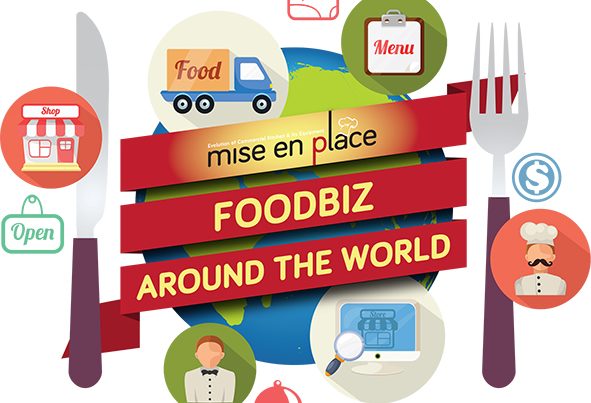
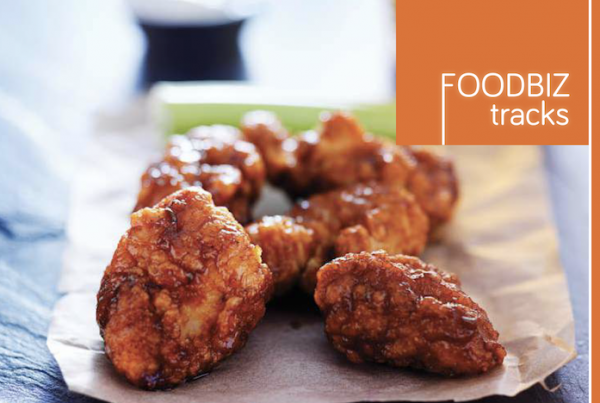


One Comment